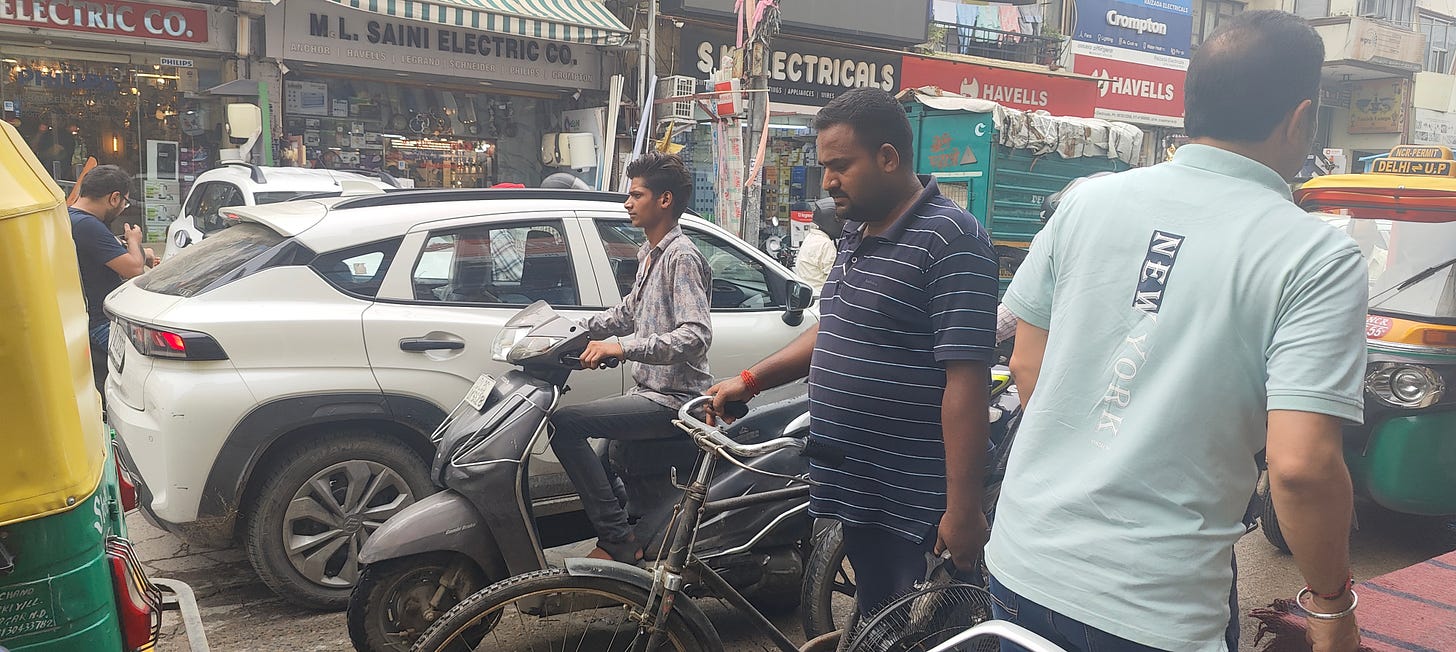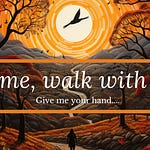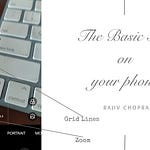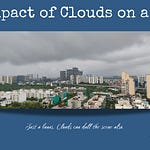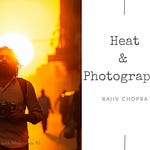Hello. I'm Rajiv again. Once again, I'm thinking aloud. A week back, I spoke about the need to take your time and why you must give yourself the gift of time.
When I made that recording, I may have sounded woolly and vague. So, it's time to become granular.
What do you do when tramping on the streets with your camera? What is the first action you take? Will you whip out your camera from your bag and start clicking? I advise against this, and I will explain why.
You must create excellent compositions, or your photographs will remain masterpieces of banality. The crowd is often the best place to hide your photographs, and hiding your photographs amongst the millions of boring images that fill social media is easy. Every place is different. Allow me to explain with two examples. I've done street photography in Europe, and people there care about privacy. Many street photographers are in your face and sometimes face intense backlash. I have noticed people here in India becoming wary of photographers.
When I walked in the “Walled City of Delhi” ten years ago, no one questioned me despite my holding a big camera—and from a street photographer's perspective, it was a monstrous camera. Many people smiled, chatted, and asked if I was an independent photographer or a photojournalist for a magazine or a TV station.
All of them were relieved when I just said, 'Hah! TV stations, newspapers, or magazines. Nah! They've all sold their souls.’ But in the last decade, surveillance cameras have been sprouting across Delhi. The police are becoming increasingly brutal, and people are becoming suspicious. One gentleman worried that I'd show the photos to the police, causing him to lose business. A woman supervising work on the street asked me. Hostility and anger mounted in her voice if I dared to photograph. I did not. Walk around and become part of the landscape on the street.
Blend in. Talk to people, hang around, smile, and observe the action. And when people stop perceiving you as a threat or an outsider, they relax. I follow a humanist approach to my photography and search for human stories. Yet you will discover that the noise, the dust, the traffic, and the madness of people milling around you make it challenging to take a good photo. On top of that, I've been advised because I tend to keep my camera in my back pocket, and many people have advised me not to do that because my pocket could be picked. It did happen once when I was getting off a rickshaw, and someone took everything out of my bag while I was getting off. So you have to be careful about the stuff that you're carrying as well. There is nothing that allows you to work in peace and silence. And I will come back to the topic of silence later.
Of course, you can take a photo of the crowd, and this sort of image is good, but not every image is crowded and has no central character or story.
I recently took a photograph in Delhi in Mubarakpur with my mobile phone, and that picture accompanies this podcast episode. You can see there's nothing in it—it's just a mess. I took that on purpose to illustrate how you can easily create messy pictures.
You need time to begin isolating images so you can tell stories. Blending speed with a slow approach becomes critical. And that statement, I know, might confuse some people, but it's important. You have to be able to blend speed with a little bit of going slow. Slow down and become alive to the drama unfolding around you. Be alive to the continuous action. Your brain must be silent yet active, and only when you are in this state can you capture critical moments on the street. And it's only when you are in this state that you move fast, because nothing distracts you then.
If you prefer to turn street photography into the fine art of abstraction, you must look for such opportunities. Look for angles, isolated elements, intense light textures, shadows, and patterns. Anything to give life to your intent. Also, remember that if your final image is a color image, your photography will work in a particular way. If your final image is black and white, you will work differently. So, have an idea, if possible, of what the images will look like.
Be clear about what you want. Before I end, let me make one point, which I will reiterate in future episodes.
When you raise your camera to your face, to your eye, you are, in effect, putting a barrier between you and the scene in front of you, whether it's street photography, landscape photography, or travel photography,
If you start by putting a barrier between you and what's happening, your photographs will be horrible. So don't rush it. Take your time, Chill! You have the time.
So give yourself the gift of time. Ciao for now, or see you next time.




